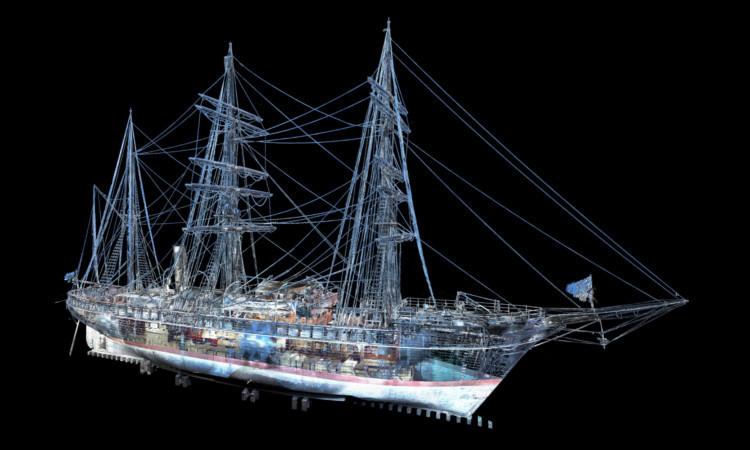For a 112-year-old ship that has endured the rigours of the Antarctic Ocean, RRS Discovery is looking remarkably well.
But its owners know keeping it that way will be a ongoing battle, and they have enlisted some modern technology to help ensure the future of a key piece of Dundee’s maritime heritage.
A 3D laser scanner has been mapping it in minute detail to help keep track of cracks that are starting to emerge in its timbers.
The picture it is building up will also aid visitors in understanding how it was built.
The company, Digital Surveys, is carrying out the project, which will result in the creation of a photo-realistic 3D model of the external hull, top deck and masts, a printed model of the ship and an online virtual tour.
But the primary purpose of the survey is to identify any deformations and provide vital information about its condition that will aid future monitoring for conservation purposes and inform possible engineering proposals regarding its care and presentation.
Mark Munsie, operations director of Dundee Heritage Trust (DHT), said: “RRS Discovery is showing signs of structural movement, which is evident in the form of cracks opening between timbers at various locations around the ship.
“This project will create an accurate and complete 3D digital record of the external shape of the vessel and provide evidence of any movement or structural deformation.”
He said DHT was grateful for financial support for the work from Museums Galleries Scotland.
Ben Bennett, chief technology officer from Digital Surveys, said the company was delighted to be working on such a prestigious heritage project.
“We will be using the latest 3D laser scanning technology to digitally capture the vessel, creating a virtual snapshot in time. Laser scanning is perfect for this type of project, capturing billions of points of information and allowing many different deliverables to be created.”
The ship, which Captain Scott took to Antarctica in 1901, is part of the UK’s National Historic Fleet.
